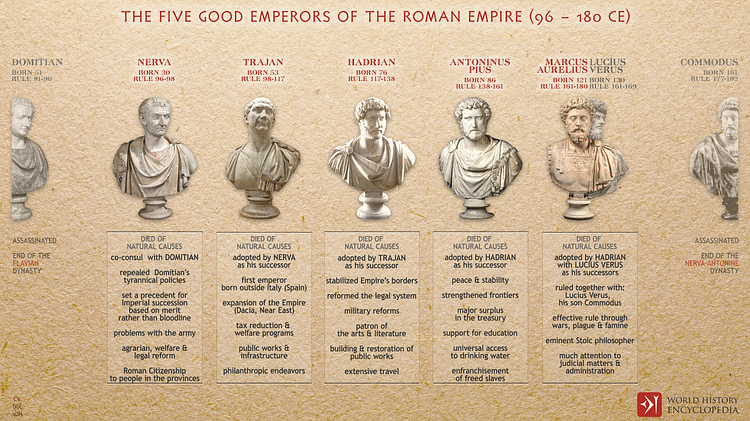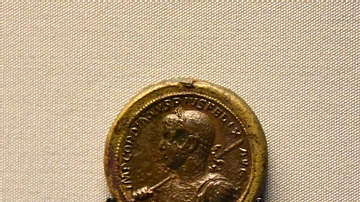Illustration
An infographic illustrating the succession of Roman rulers between 96 and 180 CE, known as the Five Good Emperors (a term unknown to the ancient Romans, coined by Nicolo Machiavelli in his 1531 manuscript Discourses on Livy and made widely popular by Edward Gibbon in his 18th century The History of the Decline and Fall of the Roman Empire,) Nerva, Trajan, Hadrian, Antoninus Pius, and Marcus Aurelius. Those were everyone but two of the Nerva-Antonine Dynasty, with Lucius Verus and Commodus not making the cut. During the time of this “kingdom of gold” (Gibbon), the Roman Empire “was governed by absolute power under the guidance of wisdom and virtue.” (Gibbon) The 84-year period is widely accepted as the high point of the Empire, with Imperial Succession ensured through adoption based on merit and acceptance rather than a strict bloodline.
Cite This Work
APA Style
Netchev, S. (2023, August 21). The Five Good Emperors of the Roman Empire (96 - 180 CE). World History Encyclopedia. Retrieved from https://www.worldhistory.org/image/17738/the-five-good-emperors-of-the-roman-empire-96---18/
Chicago Style
Netchev, Simeon. "The Five Good Emperors of the Roman Empire (96 - 180 CE)." World History Encyclopedia. Last modified August 21, 2023. https://www.worldhistory.org/image/17738/the-five-good-emperors-of-the-roman-empire-96---18/.
MLA Style
Netchev, Simeon. "The Five Good Emperors of the Roman Empire (96 - 180 CE)." World History Encyclopedia. World History Encyclopedia, 21 Aug 2023. Web. 27 Apr 2024.







